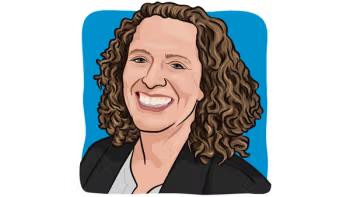
Novel Combination May Address Unmet Need in Relapsed or Refractory Acute Myeloid Leukemia
Treatment options for patients with acute myeloid leukemia are limited, especially for older patients, but a new trial looking at novel therapy combinations could change the treatment landscape.
The number of approved treatment options available for patients with relapsed or refractory acute myeloid leukemia (AML) is limited. These options are even more limited for older patients with the disease, as they may not be able to tolerate the intense therapy that is available.
According to Dr. Rajneesh Nath, a member of the SIERRA trial research team and medical oncologist at Banner MD Anderson Cancer Center in Arizona, patients with AML typically have a poor prognosis, especially after relapse.
In an interview with TargetedOncology®, CURE®’s sister publication, Nath went into greater detail about the outcome of the trial and what it could mean for patients. “The only cure for these patients is an allogeneic [hematopoietic cell transplantation],” said Nath. “This is especially true for patients older than age 55, which is most of the patients with AML.”
The problem, however, is that patients older than 55 are typically not offered allogenic HCT, according to Nath, due to the intensity of the treatment.
To address this therapeutic need, researchers conducted the phase 3 SIERRA trial to hopefully improve allogenic HCT access to older patients with active, relapsed/refractory AML. Patients received Iomab-B (apamistamab) — an anti-CD45 monoclonal antibody – followed by fludarabine/total body irradiation (FLU/TBI) and allogeneic HCT or conventional care, which was salvage chemotherapy.
All 31 patients who received the Iomab-B combination underwent HCT and were successfully engrafted, according to preliminary data presented at the 2020 Transplantation & Cellular Therapy Meeting. Only 18% of the 37 patients within the conventional care arm were able to undergo HCT.
“What is being shown in this study, and has been shown in the past, is that when you have to wait two to three weeks to attempt to put patients into remission and you look at their bone marrow, you'll see that their level of leukemia increases as we are waiting,” Nath said. “It's still safe to use these regimens and proceed; some patients can achieve a remission, even some of those patients who were unable to achieve a remission with any other treatment.”
The older the patient, the less likely they are to be able to tolerate a transplant, Nath said. Additionally, patients who are older and not achieving remission are usually excluded from transplant trials.
“The irony of the situation is that AML is, in fact, a disease of the elderly. The median age of patients with AML is about 68 years,” he said. “Therefore, clinical trials are excluding the bulk of the patients [who] would benefit from having stem cell transplantation.”
The goal, according to Nath, is to eventually determine if the duration of remission can be extended, “giving these patients a meaningful remission and possibly a cure.”





